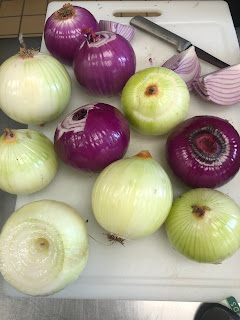Don’t Get SAD: Seasonal Affective Disorder
I have always prided myself in my positivity.
I strive to find the best in every situation and choose to view the world
through rose colored glasses, but lately I’ve noticed the slightest ever twinge
of gray coming over my sunny shades. The other night, Adam and I were
discussing my “offness” that I was feeling. I shared with him that I no longer
had the pep in my step, I was struggling to stay focused, and I honestly just
wanted to sit on the couch all day and for someone who has to be constantly moving
or completing a task, this was so not me! Adam after patiently listening to my
rant and rave said “I think you’ve got a case of the winter blues.” I love Adam
for many reasons, but one of those reasons is that he always knows how to
diagnose and decipher my “ailments”. So for those of you who are also feeling
the weight of winter, today is all about how to not to get SAD.
Now when I say SAD, I am not
talking about being melancholy or dismal. SAD stands for Seasonal Affective
Disorder is a form of depression that comes of in the form of “episodes” that
align with the changing of the seasons. Symptoms of Seasonal Affective
Disorder, as described by the National Institute of Mental Health, include low
energy, hypersomnia, overeating, weight gain, and social withdraw. Because we
live farther north from the equator that means we are getting less sunlight and
are more prone to the winter blues, but there are some ways to counteract
becoming SAD.
1.
Light
Therapy
With a lack of sunlight being one of the primary culprits,
one of the primary ways to treat seasonal depression is through light therapy.
Tanning beds are not recommended with them leading to an increased risk of sun
damage and skin cancer but there is another option. Light Therapy Boxes have
been created to filter out harmful UV rays and instead provide positive light
that can improve mood and sleep. They have small portable options available
online. I just ordered one for my desk at work!
2.
Exercise
When dealing with any kind of depression, exercise is always
recommended. When you exercise your body releases endorphins that have the
ability to alter your mood in a positive way. Exercising also has been found to
reduce stress, aid in anxiety, and improve your overall self-esteem. During
winter months, I love trying new kinds of exercise at home like yoga, Pilates,
and many others. A quick trip to the library or a look online will guide you to
various free, online exercise resources to help you stay fit at home. To get
started here is a quick 10 min body weight circuit to try. Set a timer for 2
min and complete 5 burpees, 10 pushups, 15 plank jacks, 20 jump squats. You can
use the remaining time for a rest. Repeat these exercise 5 times for a total of
10 min of work.
3.
Vitamin D
Living in Nebraska means that we have limited sunlight from
October to March and with a lack of sunlight, comes a lack of Vitamin D. Although
the National Institute of Mental Health cannot confirm that Vitamin D
supplementation is a confirmed treatment of SAD, there have been studies that
have shown it to an efficient treatment. Now seasonally depressed or not, it is
important to be consuming enough vitamin D for our bone health. Fatty fish like
tuna and salmon, fortified dairy products, cheese, and egg yolks are all high
in vitamin D and should be consumed regularly
Now although this article
was a little depressing on the sunny side warmer days will be here soon and
until then I will make the best of it by sitting in front of my light therapy
box, exercising, and consuming more vitamin d!
Resources:
https://www.nimh.nih.gov/health/topics/seasonal-affective-disorder/index.shtml
https://www.unmc.edu/alliedhealth/research/hops/calcium.html


Comments
Post a Comment